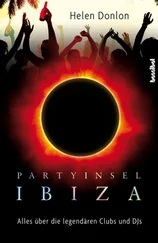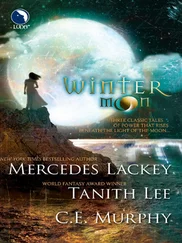The first Phoenician settlement has long been believed to be at Sa Caleta, on the south coast. The site is still marked there today. However, local historian Martin Davies points out that this has now gone up for debate, as archaeologists have recently claimed that it wouldn’t have made sense to have ignored such a beautiful and strategic bay as the main one in Ibiza Town in favour of Sa Caleta. “All these things depend on what they find, a ceramic fragment or whatever,” Davies says, “and one newly found object can change the whole picture. The archaeology of the island is a constantly updated field.”
Several hundred Phoenicians congregated at Sa Caleta nonetheless, and they are believed to have survived thanks to their advanced hunting and fishing methods. They had brought with them their hunting dogs, whose probable descendant is the Ca Eivissenc (the native Ibiza Hound) or Podenco. To this day Podencos are the most noble and independent-minded of any dog you can see on the island. They can easily roam for over 20 miles in one stretch, and are often spotted in the countryside at night, fearlessly roaming for hours in search of prey as they trot like confident racehorses down the middle of the country roads, unperturbed by traffic.
The Phoenicians named this tiny island Ybšm and the generally received wisdom is that the name comes from Bes, the Egyptian god of home protection, music, dance and sexual pleasure; although a few linguists argue that their word for balsam, perhaps referring to the scent of the pines, is the true source. After all the Greeks named Ibiza and Formentera the ‘Pityûssae’, islands of the pines. Phoenician coins did feature an image of Bes though: a bearded elfin god with a huge phallus. Ybšm was a great hideaway and warehouse even then. Sailors could store goods picked up on their travels on the island, where there was less chance of theft than there was on the Spanish mainland.
So it was that Ibiza developed its significant early role as a sanctuary, and by the time the Phoenicians had settled in it became one of the major ports in the Western Mediterranean. This era saw the introduction of viniculture to the island; a pioneering Phoenician development that to some extent inspired both the Greeks and Romans in their wine-making techniques. Wine was transported and stored in the huge rounded earthenware amphoras that to this day are a celebrated artefact of the island. During the Phoenician era Ibiza’s wondrous salt pans were also focused on, and they began to form a major part of the island’s economy, as did the mining of silver and lead, and the growth of arable farming.
One of the most magnificently unspoilt areas on Ibiza’s west coast is the now almost inaccessible crumbling promontory of Punta Galera, where at dusk the light causes the Cadaqués-like rock strata to resemble animals crouching towards the sea. It is easy to imagine that even in the time of the Phoenicians this stunning sunset would have been hard to miss. Franco-Swiss filmmaker Barbet Schroeder shot a good part of More, his dark 1969 film about listlessness and addiction, at his mother Ursula’s house at Punta Galera. His cinematographer, Néstor Almendros, captured the unique golden evening light in the scenes where the protagonists, a young couple toying with love but possessed by impending heroin dependence, bask in a timeless halcyon tranquility on the ancient rocks, against a soundtrack written especially for the film by Pink Floyd.
The pagan Phoenicians were sun and moon worshippers. Their goddess was Tanit (partner of Baal), and her energy is still said to guard but endlessly challenge the fiercely independent women who have always been drawn to live on the island. Tanit represents dance, fertility and death. Archaeological findings seem to suggest that both Bes and Tanit were being worshipped on the island by 700 BC. Their legacies certainly live on today, not just on the dance floors of the clubs, but through the island’s full moon and beach parties, and in places like Moon Beach in the north and the Sunset Ashram at Platges de Comte, or anywhere people stop to observe the sun come down on the horizon of the Mediterranean, a moment which in Ibiza heralds the coming excitements of the evening.
“An island of barbarians” is the now famous description of Ibiza cast circa 60 BC by Greek historian Diodorus Siculus. Some would say nothing has changed. He also described the men of the Balearic islands as, “of all men the most fond of women, and value them so highly above everything else that, when any of their women are seized by visiting pirates and carried off, they will give as ransom for a single woman three and even four men.” Throughout Ibiza’s eventful history, pirates and barbarians of various origin are a common thread in the narrative. But however violent the pillaging and destruction, either on land or sea, it has always come in human form, since another of the island’s great charms is that, due to the specifics of the soil and an awful lot of good luck, there have never been any poisonous reptiles in Ibiza. Or at least not until recently…for since early 2003 snakes have suddenly been reported as creeping in at various countryside locations, and this recent and quite anti-Ibicencan phenomenon is blamed on the importation of non-indigenous olive trees.
In The Journal of the Royal Geographical Society of London, 1830-31, Volume 1 it was reported that “the peculiar boast of the natives is, that no venomous reptile can live in Formentera, whether from the presence of the semper-virens, one of the snake-roots of antiquity, or that their earth has the quality of destroying serpents, as Pliny records that of Ebusus [Ibiza’s Roman name] to have done.” Pliny the Elder had indeed earlier stated, “There are various other kinds of earth, endowed with peculiar properties of their own…The earth of the Balearic Islands and of Ebusus kills serpents.” This has led historians to all basically concur that the presence of snakes today is absolutely recent.
The licentious dwarf god Bes was claimed by believers to be the defender of the land against snakes. Just to the south of today’s Ibiza Town there still lies the ancient Phoenician necropolis of Puig des Molins, which is said to have contained over 3,000 tombs. Some journalists have tried to assert that the Phoenicians would never have buried their dead in a place which had poisonous serpents, and that this is the reason for the existence of the renowned burial site, but the fact that millions of burials took place all over the Mediterranean – including Phoenicia itself, would disprove this. Some also claim that it was believed that burial in Ibiza’s earth would speed the journey on to the afterlife, and that rich people often paid well in advance to ensure a place for themselves or their relatives in the necropolis.
In his fascinating counter-cultural memoir, Bore Hole, the English author Joe Mellen recalled of his time on Ibiza in the 1960s that, “access to the tombs was only by one hole in the mountain where the caretaker sat in front of the gate. I went down once and remember the total darkness when the caretaker switched off the electric light, pitch black darkness. With the lights on I could see a few skeletons in open tombs, carved like chests out of the rock, and a maze of passages that extended far beyond the light’s penetration. It was an eerie experience.”
For anyone interested in taking a close look at some of the archaeological remains and other ancient heritage sites available to see in Ibiza, there are many well-preserved locations dotted all over the island, indicated by clearly marked pink signposts along the main roads. Apart from the fabulous museum up behind the medieval walls in Dalt Vila (the old ‘high town’, which in 1999 became a UNESCO protected site) and the necropolis of Puig des Molins in Ibiza Town, there are remains of the Phoenician settlements at Sa Caleta, sites at Ses Païsses near Cala d’Hort and Es Pouàs near Santa Agnès, the remains of Roman aqueducts at S’Argamassa on the east coast, and the goddess Tanit’s sacred sanctuary at Cova des Culleram in the north of the island. High up on a steep and winding hill path a long drive from the village of Sant Vicent, Cova des Culleram is still treated as a shrine, and is adorned with all sorts of trinkets and hope-filled messages to the goddess.
Читать дальше











